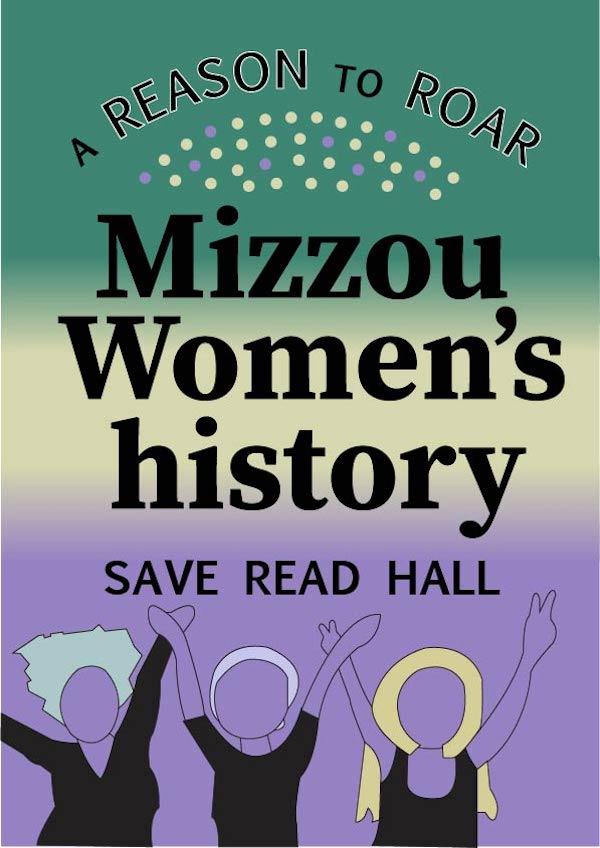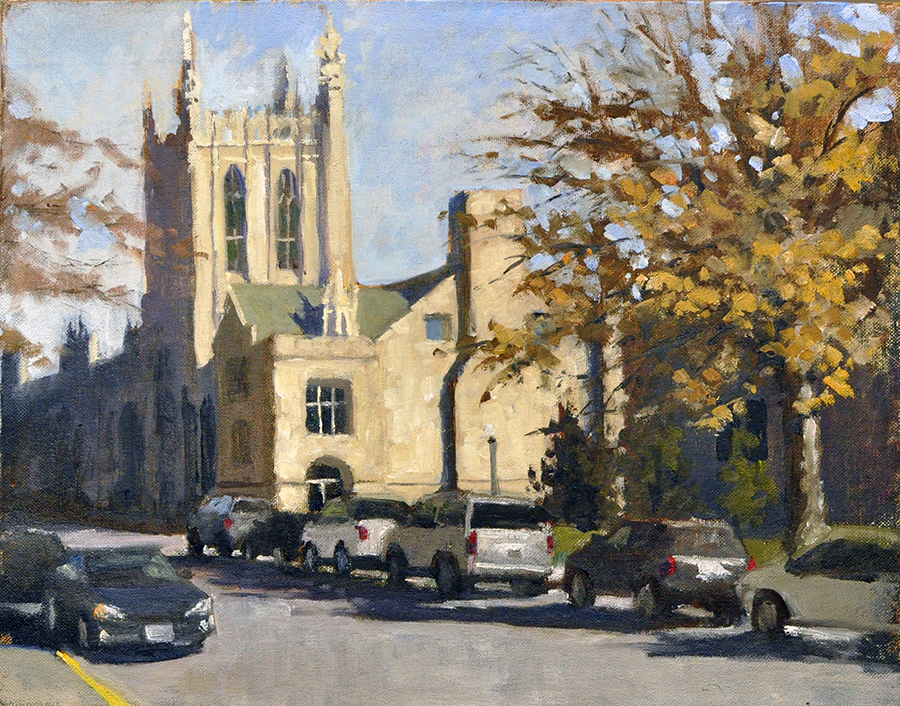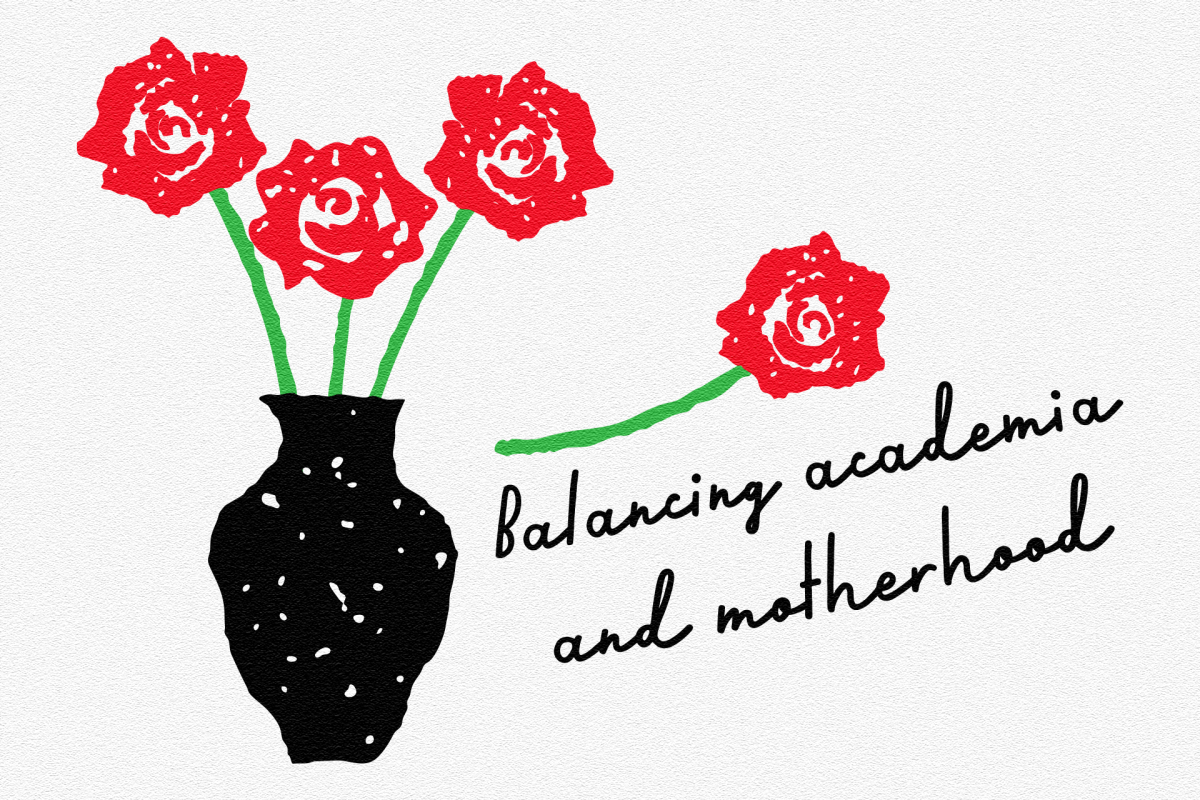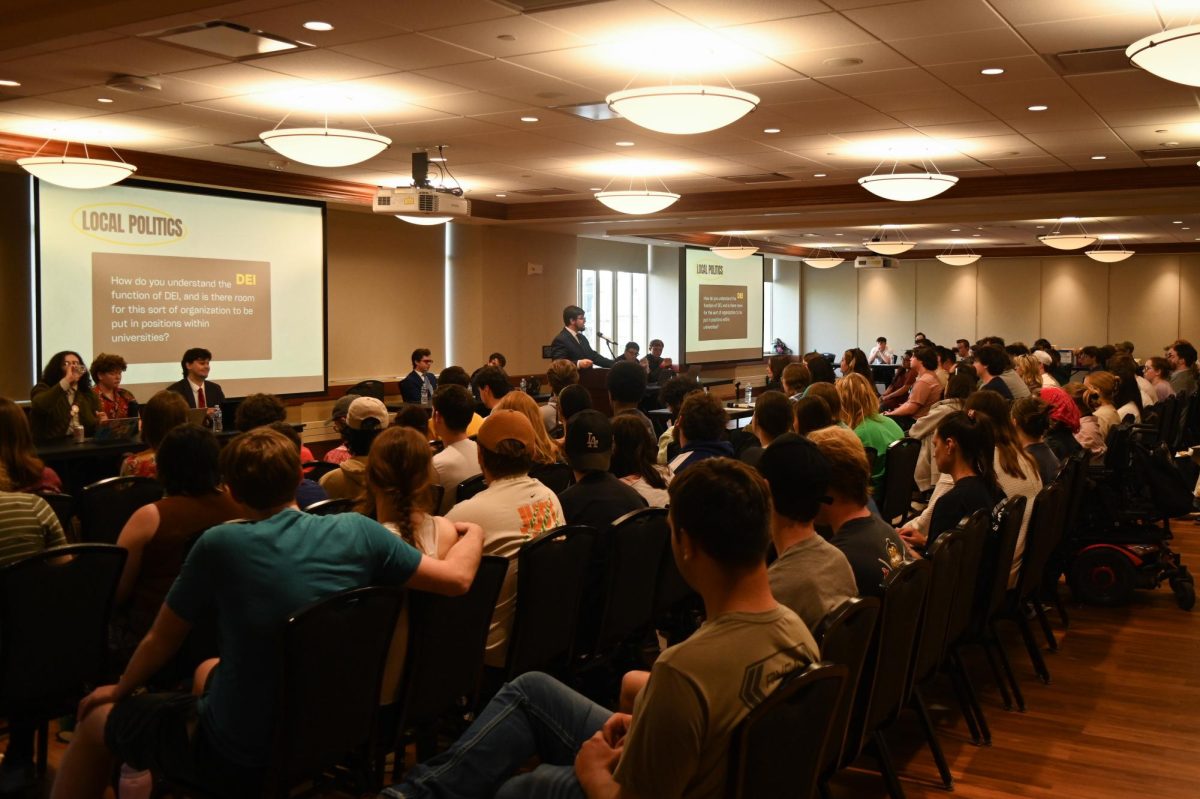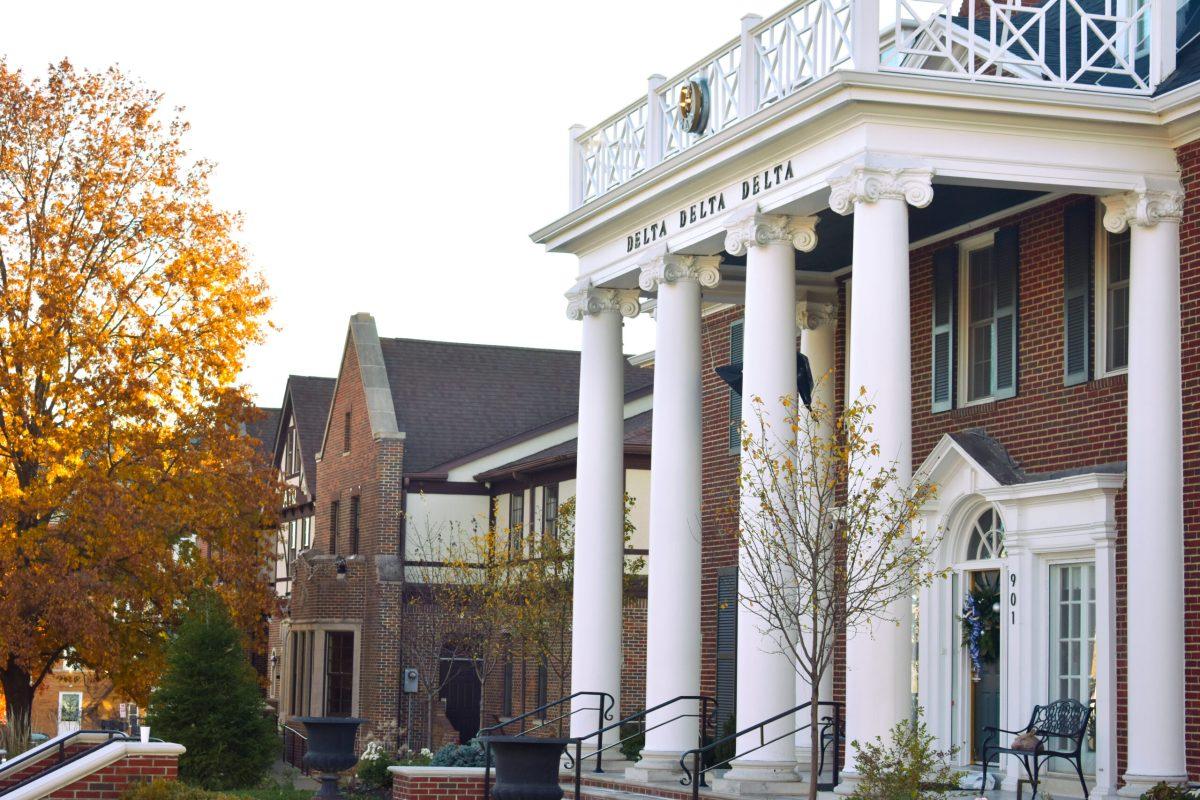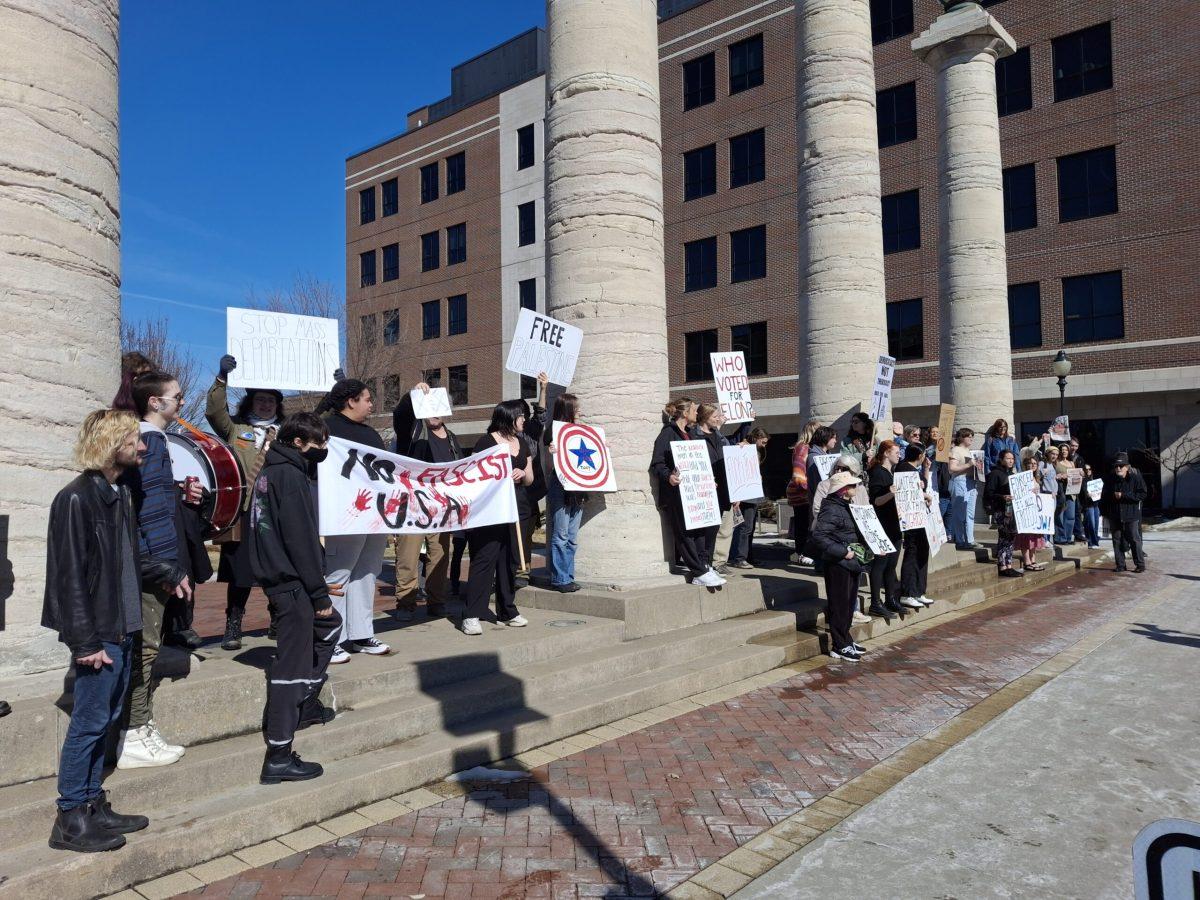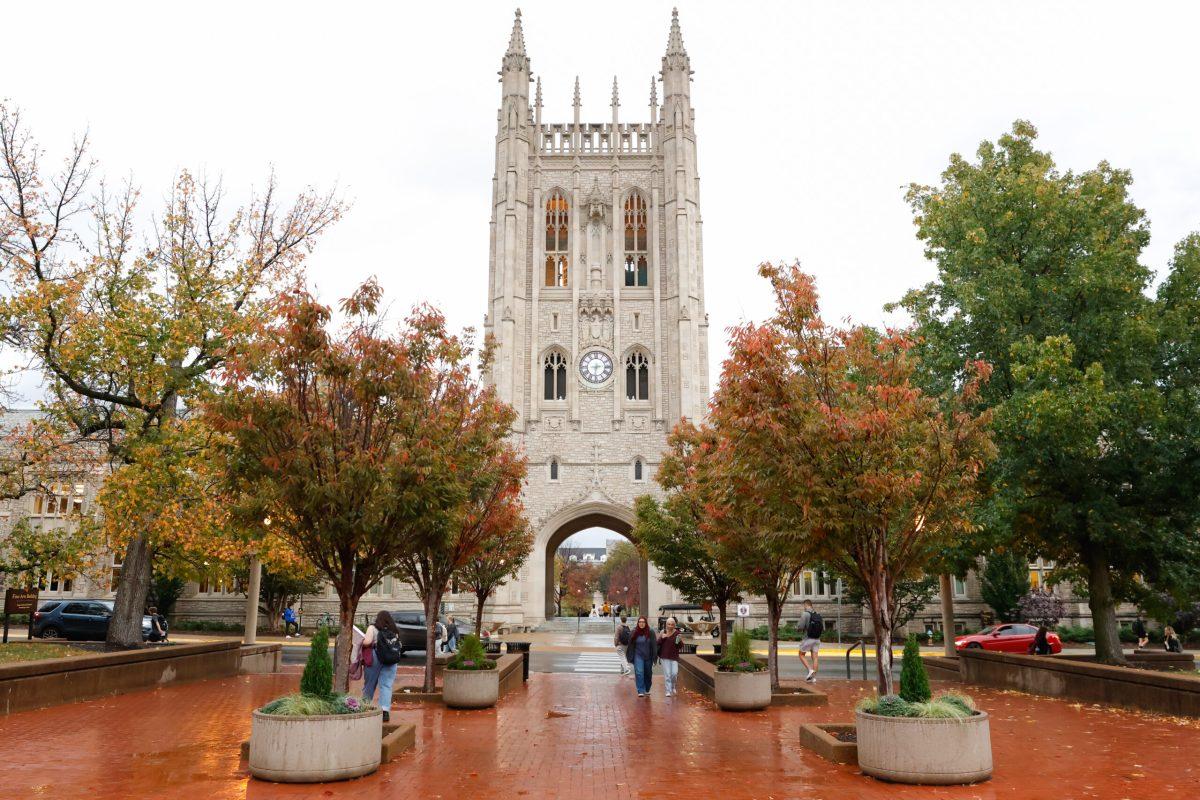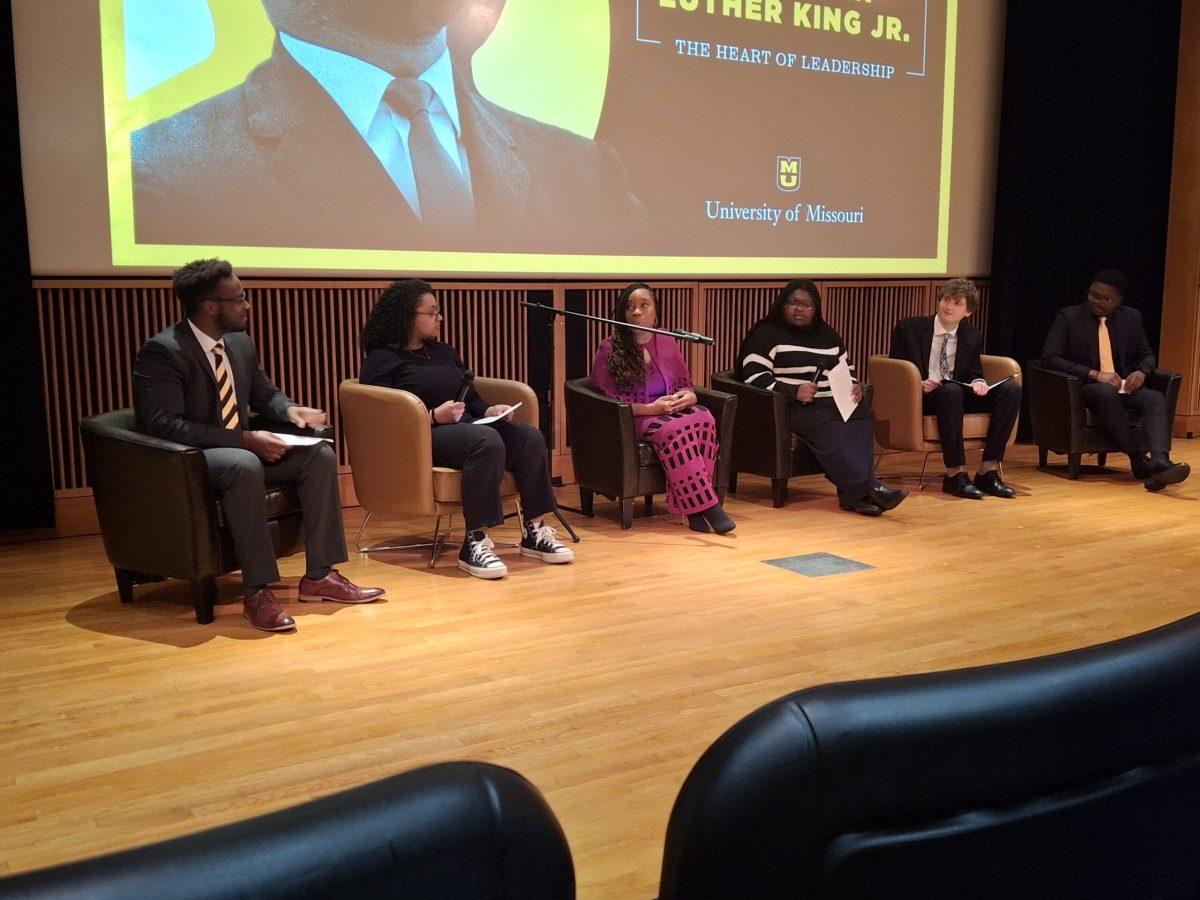During Homecoming weekend, MU history students — junior Bailey Martin, graduate student Catherine Hutinett and Ph.D. candidate Jordan Pellerito — continued their fight to save Read Hall from demolition. They displayed a collection of signs highlighting women’s history at MU to educate people on the building’s significance.
Read Hall was originally constructed in 1903 and named after Daniel Read, the MU president who opened the university to women in 1868. Since then, the building served several different purposes, including as a 1918 influenza hospital, the first women’s dormitory and, most recently, housing the Department of History.
Martin, Hutinett and Pellerito are history students collaborating to save Read Hall from demolition. They began their work last spring, immediately after the demolition plan, part of the university’s Strategic Space Reduction Plan, was announced to students in a March 4 email. They started with social media accounts under the username @savereadhall and a petition, which has now received nearly 2,900 signatures.
They wanted to capitalize on Homecoming weekend to further their mission and attract more interest, so they took advantage of the Homecoming Parade route that passed directly in front of the building.
Martin, Hutinett and Pellerito decided to place the signs they created on Read Hall’s lawn during Homecoming for visitors and community members to learn about the hall’s history and women’s history at MU. The group made the signs themselves and featured events related to women’s history spanning from 1867, when women were first admitted to MU through the College of Education, to today.
The sign with the most recent fact highlighted Desiree Reed-Francois, the new director of intercollegiate athletics, who is both the first female athletic director at MU and in the SEC as a whole.
Pellerito said another person they featured on the signs was Barbara Uehling Charlton, the first woman to serve as chancellor of MU and a land-grant institution in the U.S.
While chancellor, Uehling Charlton focused heavily on campus beautification and played an instrumental role in preserving Conley House and achieving MU’s botanical garden status. Pellerito said the group believes demolishing Read Hall will ruin Uehling Charlton’s vision of a cohesive academic community.
“She was really important for the physical aspect of campus and making [students] feel like [they] were at a university and like you want to come and experience an academic life,” she said.
The group’s signs also featured Lucile Bluford, a Black journalist who tried to enroll in MU’s graduate journalism program in 1939 and was denied several times. Pellerito said they wanted to make sure their signs were not confined to white women’s history at MU.
The signs honored other important alumni, such as astronaut Linda Godwin and the first elected female lieutenant governor of Michigan, Martha Griffiths.
During Homecoming, Martin, Hutinett and Pellerito all sat on picnic blankets outside the building to discuss Read Hall’s history with the many visitors who walked past.
“We’ve just had people who are glad to see that someone is doing this work,” Martin said.
Hutinett said sharing information about the building was “gratifying,” and Pellerito agreed, saying this was especially true with little girls who stopped by. They also enjoyed educating alumni and the new class of freshmen who may not have previously known about Read Hall’s history.
“With a whole new class of freshmen, a lot of people don’t know about Read, about its history and plan for demolition,” Martin said. “[We can] point out to them that this is a hugely significant thing that’s happening.”
The group said they also hoped MU administration took note of the Homecoming weekend signs and visitors’ interest in learning about the building.
“The intents and the decisions that go into what history we choose to keep on campus and physically display on campus is a very intentional decision,” Pellerito said. “It’s very important to keep in mind that history is not just written in textbooks.”
Hutinett said the administration should also consider the amount of student support for the movement to save Read Hall, and said the students she has talked to expressed a strong desire for a sense of a physical community, which they believe will be endangered if Read Hall is demolished.
Martin referenced other UM System campuses experiencing difficulties with recruitment numbers, which she said she believes is likely due to their own lack of a defined physical campus. She said MU already has this campus environment, yet is erasing it anyway.
“[The other campuses] are preparing to invest millions of dollars to make their campus have some sort of character and visual appeal, and to have a cohesive physical landscape that Mizzou already has, and we’re getting ready to destroy it,” she said.
Martin said their overall goal is “to keep a campus worth coming home to.” The three of them also hope their Homecoming weekend signs helped convince more people to support saving Read Hall because they believe that everybody’s story at MU is in some way connected to the building.
“What the university chooses not to put money into or chooses to demolish is very reflective of the history that it wants to present or the history that it prioritizes,” said Pellerito.
Edited by Namratha Prasad | [email protected]

